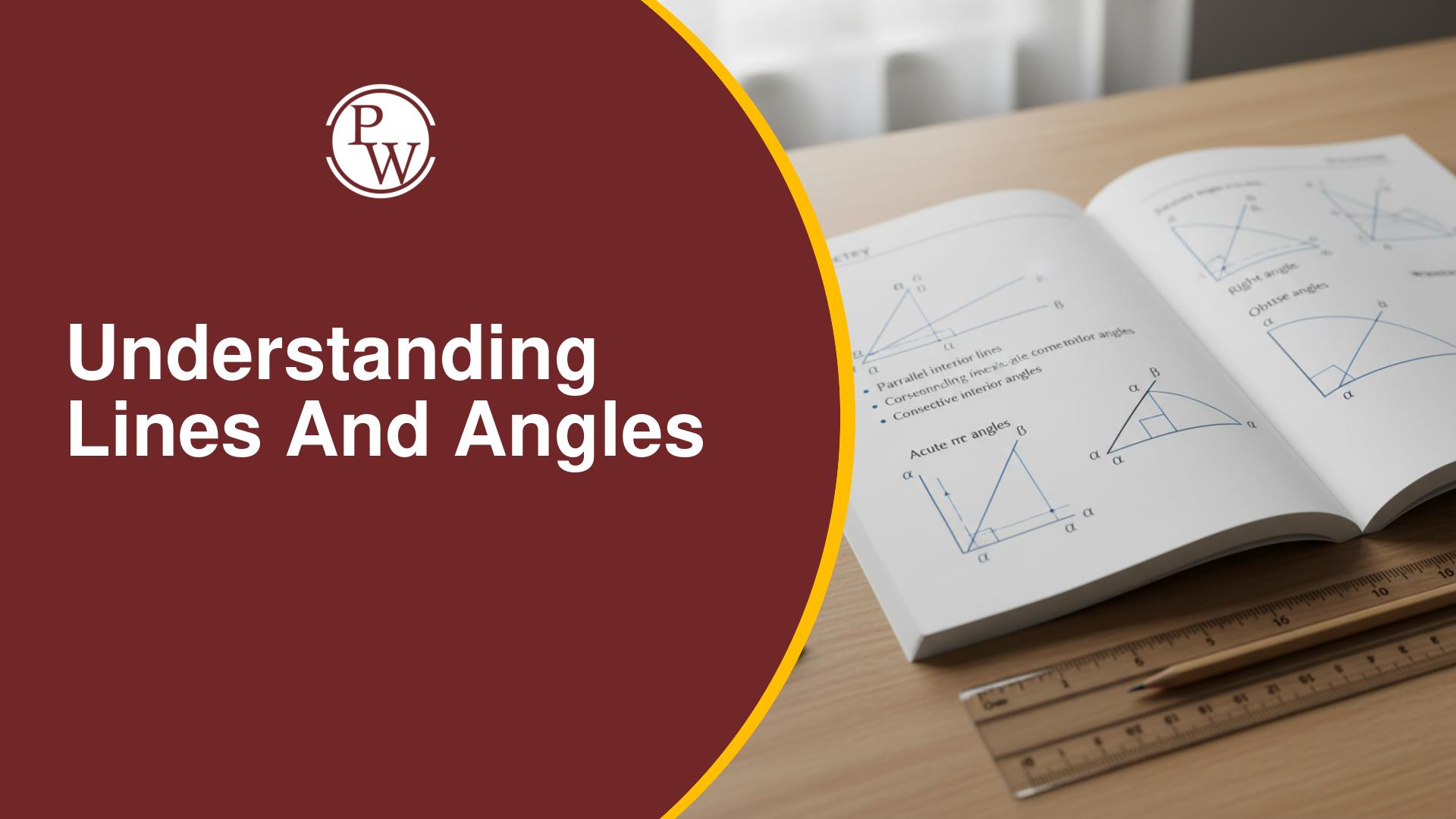
RD Sharma Solutions Class 10 Maths Chapter 4 Exercise 4.5: RD Sharma Solutions for Class 10 Maths Chapter 4 Exercise 4.5 provide a detailed guide on advanced concepts related to triangles, with a focus on applying similarity criteria to solve problems.
By practicing these solutions, students strengthen their analytical skills deepen their understanding of geometric properties and gain confidence in applying these concepts effectively preparing them well for exams and future math studies.RD Sharma Solutions Class 10 Maths Chapter 4 Exercise 4.5 Overview
RD Sharma Solutions for Class 10 Maths Chapter 4 Exercise 4.5 are created by subject experts at Physics Wallah provide an in-depth understanding of triangle similarity and proportionality. The solutions are presented in a clear, step-by-step format, guiding students through each problem with detailed explanations and practical applications. These solutions help students build strong foundational skills in geometry, improve problem-solving techniques and prepare effectively for board exams.RD Sharma Solutions Class 10 Maths Chapter 4 Triangles Exercise 4.5 PDF
You can download the RD Sharma Solutions for Class 10 Maths Chapter 4 Exercise 4.5 in PDF format from the link provided below. This resource is created to enhance understanding, strengthen problem-solving skills and support effective exam preparation, making it a valuable resource for mastering geometry in Class 10 Maths.RD Sharma Solutions Class 10 Maths Chapter 4 Triangles Exercise 4.5 PDF
RD Sharma Solutions Class 10 Maths Chapter 4 Triangles Exercise 4.5 Triangles
Below is the RD Sharma Solutions Class 10 Maths Chapter 4 Exercise 4.5 Triangles-1. In fig. 4.136, ΔACB ∼ ΔAPQ. If BC = 8 cm, PQ = 4 cm, BA = 6.5 cm and AP = 2.8 cm, find CA and AQ.
Solution:
Given, ΔACB ∼ ΔAPQ BC = 8 cm, PQ = 4 cm, BA = 6.5 cm and AP = 2.8 cm Required to find: CA and AQ We know that,
ΔACB ∼ ΔAPQ [given]
BA/ AQ = CA/ AP = BC/ PQ [Corresponding Parts of Similar Triangles]
So,
6.5/ AQ = 8/ 4
AQ = (6.5 x 4)/ 8
AQ = 3.25 cm
Similarly, as
CA/ AP = BC/ PQ
CA/ 2.8 = 8/ 4
CA = 2.8 x 2
CA = 5.6 cm
Hence, CA = 5.6 cm and AQ = 3.25 cm.
We know that,
ΔACB ∼ ΔAPQ [given]
BA/ AQ = CA/ AP = BC/ PQ [Corresponding Parts of Similar Triangles]
So,
6.5/ AQ = 8/ 4
AQ = (6.5 x 4)/ 8
AQ = 3.25 cm
Similarly, as
CA/ AP = BC/ PQ
CA/ 2.8 = 8/ 4
CA = 2.8 x 2
CA = 5.6 cm
Hence, CA = 5.6 cm and AQ = 3.25 cm.
2. In fig.4.137, AB ∥ QR , find the length of PB.
Solution:
Given, ΔPQR, AB ∥ QR and AB = 3 cm, QR = 9 cm and PR = 6 cm Required to find: PB In ΔPAB and ΔPQR
We have,
∠P = ∠P [Common]
∠PAB = ∠PQR [Corresponding angles as AB||QR with PQ as the transversal]
⇒ ΔPAB
∼
ΔPQR [By AA similarity criteria]
Hence,
AB/ QR = PB/ PR [Corresponding Parts of Similar Triangles are propositional]
⇒ 3/ 9 = PB/6
PB = 6/3
Therefore, PB = 2 cm
In ΔPAB and ΔPQR
We have,
∠P = ∠P [Common]
∠PAB = ∠PQR [Corresponding angles as AB||QR with PQ as the transversal]
⇒ ΔPAB
∼
ΔPQR [By AA similarity criteria]
Hence,
AB/ QR = PB/ PR [Corresponding Parts of Similar Triangles are propositional]
⇒ 3/ 9 = PB/6
PB = 6/3
Therefore, PB = 2 cm
3. In fig. 4.138 given, XY∥BC . Find the length of XY.
Solution:
Given, XY∥BC AX = 1 cm, XB = 3 cm and BC = 6 cm Required to find: XY In ΔAXY and ΔABC
We have,
∠A = ∠A [Common]
∠AXY = ∠ABC [Corresponding angles as AB||QR with PQ as the transversal]
⇒ ΔAXY
∼
ΔABC [By AA similarity criteria]
Hence,
XY/ BC = AX/ AB [Corresponding Parts of Similar Triangles are propositional]
We know that,
(AB = AX + XB = 1 + 3 = 4)
XY/6 = 1/4
XY/1 = 6/4
Therefore, XY = 1.5 cm
In ΔAXY and ΔABC
We have,
∠A = ∠A [Common]
∠AXY = ∠ABC [Corresponding angles as AB||QR with PQ as the transversal]
⇒ ΔAXY
∼
ΔABC [By AA similarity criteria]
Hence,
XY/ BC = AX/ AB [Corresponding Parts of Similar Triangles are propositional]
We know that,
(AB = AX + XB = 1 + 3 = 4)
XY/6 = 1/4
XY/1 = 6/4
Therefore, XY = 1.5 cm
4. In a right-angled triangle with sides a and b and hypotenuse c, the altitude drawn on the hypotenuse is x. Prove that ab = cx.
Solution:
Consider ΔABC to be a right-angle triangle having sides a and b and hypotenuse c. Let BD be the altitude drawn on the hypotenuse AC. Required to prove: ab = cx We know that,
In ΔACB and ΔCDB
∠B = ∠B [Common]
∠ACB = ∠CDB = 90
o
⇒ ΔACB
∼
ΔCDB [By AA similarity criteria]
Hence,
AB/ BD = AC/ BC [Corresponding Parts of Similar Triangles are propositional]
a/ x = c/ b
⇒ xc = ab
Therefore, ab = cx
We know that,
In ΔACB and ΔCDB
∠B = ∠B [Common]
∠ACB = ∠CDB = 90
o
⇒ ΔACB
∼
ΔCDB [By AA similarity criteria]
Hence,
AB/ BD = AC/ BC [Corresponding Parts of Similar Triangles are propositional]
a/ x = c/ b
⇒ xc = ab
Therefore, ab = cx
5. In fig. 4.139, ∠ABC = 90 and BD⊥AC . If BD = 8 cm, and AD = 4 cm, find CD.
Solution:
Given, ∠ABC = 90 o and BD⊥AC BD = 8 cm AD = 4 cm Required to find: CD. We know that,
ABC is a right-angled triangle, and BD⊥AC.
Then, ΔDBA∼ΔDCB [By AA similarity]
BD/ CD = AD/ BD
BD
2
= AD x DC
(8)
2
= 4 x DC
DC = 64/4 = 16 cm
Therefore, CD = 16 cm
We know that,
ABC is a right-angled triangle, and BD⊥AC.
Then, ΔDBA∼ΔDCB [By AA similarity]
BD/ CD = AD/ BD
BD
2
= AD x DC
(8)
2
= 4 x DC
DC = 64/4 = 16 cm
Therefore, CD = 16 cm
6. In fig.4.140, ∠ABC = 90 o and BD ⊥ AC. If AC = 5.7 cm, BD = 3.8 cm and CD = 5.4 cm, Find BC.
Solution:
Given: BD ⊥ AC AC = 5.7 cm, BD = 3.8 cm and CD = 5.4 cm ∠ABC = 90 o Required to find: BC We know that,
ΔABC ∼ ΔBDC [By AA similarity]
∠BCA = ∠DCA = 90
o
∠AXY = ∠ABC [Common]
Thus,
AB/ BD = BC/ CD [Corresponding Parts of Similar Triangles are propositional]
5.7/ 3.8 = BC/ 5.4
BC = (5.7 x 5.4)/ 3.8 = 8.1
Therefore, BC = 8.1 cm
We know that,
ΔABC ∼ ΔBDC [By AA similarity]
∠BCA = ∠DCA = 90
o
∠AXY = ∠ABC [Common]
Thus,
AB/ BD = BC/ CD [Corresponding Parts of Similar Triangles are propositional]
5.7/ 3.8 = BC/ 5.4
BC = (5.7 x 5.4)/ 3.8 = 8.1
Therefore, BC = 8.1 cm
7. In the fig.4.141 given, DE ∥ BC such that AE = (1/4)AC. If AB = 6 cm, find AD.
Solution:
Given: DE∥BC AE = (1/4)AC AB = 6 cm. Required to find: AD. In ΔADE and ΔABC
We have,
∠A = ∠A [Common]
∠ADE = ∠ABC [Corresponding angles as AB||QR with PQ as the transversal]
⇒ ΔADE
∼
ΔABC [By AA similarity criteria]
Then,
AD/AB = AE/ AC [Corresponding Parts of Similar Triangles are propositional]
AD/6 = 1/4
4 x AD = 6
AD = 6/4
Therefore, AD = 1.5 cm
In ΔADE and ΔABC
We have,
∠A = ∠A [Common]
∠ADE = ∠ABC [Corresponding angles as AB||QR with PQ as the transversal]
⇒ ΔADE
∼
ΔABC [By AA similarity criteria]
Then,
AD/AB = AE/ AC [Corresponding Parts of Similar Triangles are propositional]
AD/6 = 1/4
4 x AD = 6
AD = 6/4
Therefore, AD = 1.5 cm
8. In the fig.4.142 given, if AB ⊥ BC, DC ⊥ BC, and DE ⊥ AC, prove that ΔCED ∼ ΔABC
Solution:
Given: AB ⊥ BC, DC ⊥ BC, DE ⊥ AC Required to prove: ΔCED∼ΔABC We know that,
From ΔABC and ΔCED
∠B = ∠E = 90
o
[given]
∠BAC = ∠ECD [alternate angles since, AB || CD with BC as transversal]
Therefore, ΔCED∼ΔABC [AA similarity]
We know that,
From ΔABC and ΔCED
∠B = ∠E = 90
o
[given]
∠BAC = ∠ECD [alternate angles since, AB || CD with BC as transversal]
Therefore, ΔCED∼ΔABC [AA similarity]
9. Diagonals AC and BD of a trapezium ABCD with AB ∥ DC intersect each other at the point O. Using similarity criterion for two triangles, show that OA/ OC = OB/ OD
Solution:
Given: OC is the point of intersection of AC and BD in the trapezium ABCD, with AB ∥ DC. Required to prove: OA/ OC = OB/ OD We know that,
In ΔAOB and ΔCOD
∠AOB = ∠COD [Vertically Opposite Angles]
∠OAB = ∠OCD [Alternate angles]
Then, ΔAOB ∼ ΔCOD
Therefore, OA/ OC = OB/ OD [Corresponding sides are proportional]
We know that,
In ΔAOB and ΔCOD
∠AOB = ∠COD [Vertically Opposite Angles]
∠OAB = ∠OCD [Alternate angles]
Then, ΔAOB ∼ ΔCOD
Therefore, OA/ OC = OB/ OD [Corresponding sides are proportional]
10. If Δ ABC and Δ AMP are two right triangles, right angled at B and M, respectively such that ∠MAP = ∠BAC. Prove that
(i) ΔABC ∼ ΔAMP
(ii) CA/ PA = BC/ MP
Solution:
(i) Given: Δ ABC and Δ AMP are the two right triangles. We know that,
∠AMP = ∠B = 90
o
∠MAP = ∠BAC [Vertically Opposite Angles]
⇒ ΔABC∼ΔAMP [AA similarity]
(ii) Since, ΔABC∼ΔAMP
CA/ PA = BC/ MP [Corresponding sides are proportional]
Hence proved.
We know that,
∠AMP = ∠B = 90
o
∠MAP = ∠BAC [Vertically Opposite Angles]
⇒ ΔABC∼ΔAMP [AA similarity]
(ii) Since, ΔABC∼ΔAMP
CA/ PA = BC/ MP [Corresponding sides are proportional]
Hence proved.
11. A vertical stick 10 cm long casts a shadow 8 cm long. At the same time, a tower casts a shadow 30 m long. Determine the height of the tower.
Solution:
Given: Length of stick = 10cm Length of the stick’s shadow = 8cm Length of the tower’s shadow = 30m = 3000cm Required to find: the height of the tower = PQ. In ΔABC ∼ ΔPQR
∠ABC = ∠PQR = 90
o
∠ACB = ∠PRQ [Angular Elevation of Sun is same for a particular instant of time]
⇒ ΔABC ∼ ΔPQR [By AA similarity]
So, we have
AB/BC = PQ/QR [Corresponding sides are proportional]
10/8 = PQ/ 3000
PQ = (3000×10)/ 8
PQ = 30000/8
PQ = 3750/100
Therefore, PQ = 37.5 m
In ΔABC ∼ ΔPQR
∠ABC = ∠PQR = 90
o
∠ACB = ∠PRQ [Angular Elevation of Sun is same for a particular instant of time]
⇒ ΔABC ∼ ΔPQR [By AA similarity]
So, we have
AB/BC = PQ/QR [Corresponding sides are proportional]
10/8 = PQ/ 3000
PQ = (3000×10)/ 8
PQ = 30000/8
PQ = 3750/100
Therefore, PQ = 37.5 m
12. In fig.4.143, ∠A = ∠CED, prove that ΔCAB ∼ ΔCED. Also find the value of x.
Solution:
Given: ∠A = ∠CED Required to prove: ΔCAB ∼ ΔCED In ΔCAB ∼ ΔCED
∠C
=
∠C
[Common]
∠A
=
∠CED [Given]
⇒ ΔCAB ∼ ΔCED [By AA similarity]
Hence, we have
CA/ CE = AB/ ED [Corresponding sides are proportional]
15/10 = 9/x
x = (9 x 10)/ 15
Therefore, x = 6 cm
In ΔCAB ∼ ΔCED
∠C
=
∠C
[Common]
∠A
=
∠CED [Given]
⇒ ΔCAB ∼ ΔCED [By AA similarity]
Hence, we have
CA/ CE = AB/ ED [Corresponding sides are proportional]
15/10 = 9/x
x = (9 x 10)/ 15
Therefore, x = 6 cm
Benefits of RD Sharma Solutions Class 10 Maths Chapter 4 Triangles Exercise 4.5
Clear Understanding of Key Theorems : The exercise focuses on essential theorems like the Basic Proportionality Theorem (Thales’ Theorem) and similarity criteria such as SAS (Side-Angle-Side) and SSS (Side-Side-Side). These theorems are crucial for solving complex problems in geometry.
Step-by-Step Solutions : Each problem is broken down into clear, understandable steps, ensuring that students can follow the logical progression of solving geometry problems and learn how to apply theorems effectively.
Enhances Problem-Solving Skills : By practicing these solutions students improve their ability to analyze and solve geometric problems efficiently, which is vital for scoring well in exams.
Comprehensive Revision Tool : The solutions are a best resource for revision, helping students quickly go over important topics, understand tricky concepts, and consolidate their knowledge.
Board Exam Preparation : As the exercise aligns with the Class 10 syllabus, it helps students focus on the types of questions that are likely to appear in board exams, thus improving their exam readiness.
Strengthens Conceptual Clarity : Regular practice with these solutions helps reinforce the foundational concepts of triangle properties and theorems building a strong base for higher-level mathematics.
Time Management : By learning the best strategies for solving problems, students can improve their speed and accuracy crucial for managing time effectively during exams.
RD Sharma Solutions Class 10 Maths Chapter 4 Exercise 4.5 FAQs
How can Exercise 4.5 help in preparing for exams?
What is the Basic Proportionality Theorem (Thales' Theorem)?
Can the solutions in Exercise 4.5 help improve problem-solving skills?
Is Exercise 4.5 relevant for Class 10 board exams?










